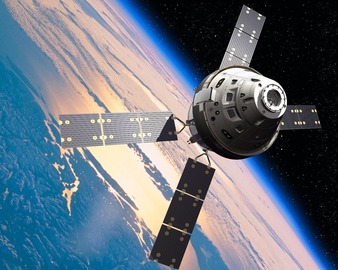 Space Center Houston
Space Center Houston
|
Next Challenge: Propose a solution for a cost-effective, VOC compliant windshield washer fluid |

We exist in an exciting moment for manned space exploration as the first manned mission to Mars looms closer. As one would expect, there are many difficulties associated with a mission of this duration, and many of those problems are being addressed in new and creative ways. As technology continues to progress, we as a species are capable of things that were unimaginable a few generations ago. But even with all of our advances, there are some problems that are still awaiting solutions.
NASA conducts a rigorous screening process when selecting astronauts to ensure that there is a minimal chance of problems arising during a mission, but what will soon be attempted, a long term mission beyond Low Earth Orbit, is something for which we have limited experience. Liberal estimates for the duration of a journey to Mars vary from 12 to 32 months. Though there may be five to seven crew members on the trip, that much time in an isolated environment with a limited number of people with whom to interact may have unforeseen psychological effects. Which brings us to our big question.
How can we minimize the psychological strain on astronauts while also potentially helping them accomplish mission directives or maintain/develop fine motor control or other desirable condition activities?
Amazing strides have been made in Virtual Reality, Augmented Reality, and “gaming.” Using these games or experiences in combination with other strategies may provide an answer to what is considered one of the most difficult problems in expedition class flight.
Design a potential solution for enriched environments for long duration space flights. Assume that there would be a small capsule (3 meter cylinder with a radius of 1.5 meters) devoted to your solution. Provide deliverables as described below:
- Submit a visual of your design. High-resolution designs using rendering software are preferred, but well-made designs of any kind will be accepted. Be sure to include:
- The design of the capsule.
- Visual representations of all required hardware. If hardware does not exist, a schematic of hardware.
- If there is a virtual environment, provide a visual representation.
- Explain the concept itself:
- Would there be multiple environments or situations from which to choose? If so, describe each.
- Explain how your proposal will do the following:
- Simulate exciting and engaging environments.
- Maintain and develop fine motor control.
- Act as a monitor for psychological health.
- Submit any code you may have created for a virtual environment.
NOTE: If you attach a file as your submission, please include any text answers in the body of the submission as well.
-
Submissions will be graded on the following criteria:
- Meets Deliverables (1 pt)
- Creativity (2 pt)
- Clarity (1 pt)
- Detail (1 pt)
- Viability (2 pt)
will receive $1,000
will receive $300 each
| $1,000.00 |

|
Pedro M University of Providence | |
| $300.00 |

|
Matthew Gaiser Queen's University | |
| $300.00 |

|
Salek Khan University of Texas at Dallas |